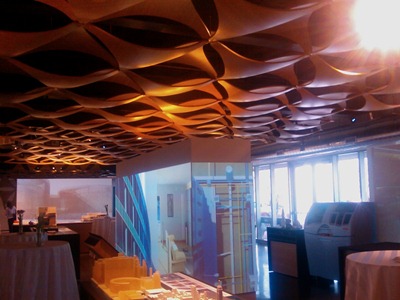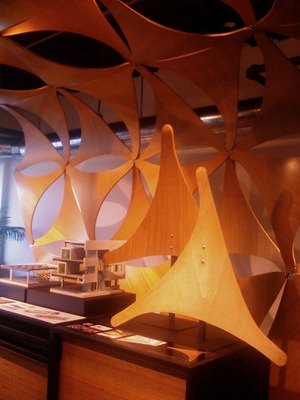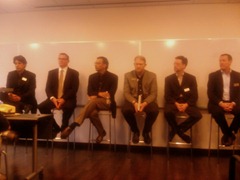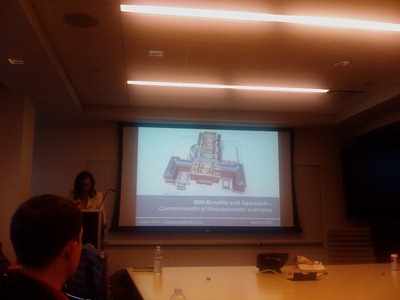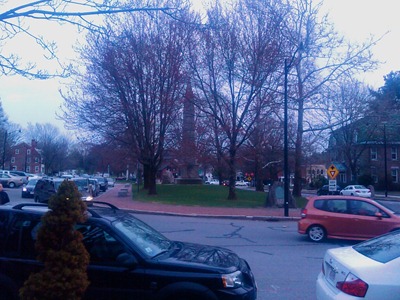I'm smoking a pork butt for supper on Sunday. I am going to update this post as I go.
The subject: 9lb Pork butt, bone in. $3.59/pound. Purchased at Prairie Meats. I'm not sure if this is a good price, or a bad one.
(After reading on the 'net, it seems that this is not a good price. Our American neighbours can get it at well under a dollar per pound while folks out in Ontario are paying about $2.50 - I'll keeping my eye out for sale prices for future pork endeavours, perhaps talking directly to my local hog producer.)The recipe:
http://www.susanminor.org/forums/showthread.php?p=99#post99For advice on the timing, I've been referring to various posts at
http://forum.bradleysmoker.com/ which suggest that pork butt can take anywhere from 12 to 24 hours before it's ready to pull. The variance is due to the size and shape of the meat, the smoking/cooking temperature, the fat & connective tissue content of the particular pieces of meat, and more. Affecting the cooking temperature are factors like outside temperature, wind, sunshine, etc. The experts at the aforementioned forum also suggest that it is MUCH better to have your butt done early and to let it "rest" longer than to be waiting on the meat to reach an internal temperature of 190°F.
So, here's how things are playing out:
Saturday, 8:00 pm - Applied pork rub following recipe at
http://www.susanminor.org/forums/showthread.php?p=99#post99. The recipe calls for a 1/4 cup of freshly cracked pepper. That's a lot of pepper to grind by hand so I connected the cordless drill to the pepper grinder in order to do it in a more efficient (and manly) manner.
Sunday, 12:00 am - Took the pork out of the fridge, applied more rub. Set up smoker in the back yard and loaded smoker with several rocks to help hold & recover heat when the door opens. Filled water pan with boiling water to help the cabinet (and the rocks) heat up. The ambient temperature is about 6°C so the heat setting on the smoker cabinet is full bore in order to combat the cold of night. Also have the smoke generator turned on to pre-heat it, and to help warm the cabinet.
1:00 am - Put pork into the smoker and loaded 4 hours, 40 minutes worth of wood "bisquettes". Used 2/3 apple, 1/3 hickory.
1:40 am - Checked the smoker temperature before heading off to bed - the cabinet thermometer is already reading at about 185°F! That's a quicker rise than I expected considering the big slab of meat is still relatively cool and moist, and it's not very warm outside. Rather than head off to bed as planned, I'm staying up to tweak the temperature in order to have the cabinet running at the desired 200 - 210°F. The heat control on my
Bradley smoker is a simple slider, with not temperature setting. Thus, it requires some monitoring and adjusting in order to hit a target.
My desire to get a
PID temperature controller has just jumped up a couple of notches! In the meantime, I make an adjustment, wait a fair bit of time for the cabinet to react and stabilise, then check and make another adjustment. This is repeated until the target is reached. However, changing outside temperatures or wind affect this, and the changing food inside the cabinet also affect this so it's a moving target.
In the meantime, I have had the time to write all of the above....
2:15 am - The cabinet is at close to the same temperature as 35 minutes earlier, perhaps just a few degrees higher. So, it seems like I can safely head off to bed now for a few hours.
7:15 am - I had the alarm set for 6 am, but apparently I didn't turn it on. Got up to check on things, and all seemed OK. Temperature is stilll low at about 190°F so it's not like it's goign to burn up too soon. Back to bed...
9:00 am - Checking on things again.... Temp still at about 190 or 195. Refilled water bowl with boiling water and inserted probe of digital thermometer.
Overnight low was about 1°C for several hours. Current temperature is 11°C, it's calm and the sun is shining.
4:50 pm - Guests will be here in less than an hour, and the butt isn't done yet! The internal temperature is 169°F and I need it to be up to at least 175 (higher is better) before I pull it. I think I'm going to have to put it in the oven to finish it off. I don't know, do I leave it alone for another hour or so (the cabinet is at about 230°F), or do I take preemptive action?
While I was at it, this afternoon I did two "
Bacon Explosions" similar to what I did last fall for the Grey Cup. I used another hours worth of apple wood smoke on that. One is stuffed with bacon, fried onion & mushrooms, and the other has less of the same, but a can of green chilis added. That stuffing is wrapped in pork sausage meat, wrapped in a woven bacon wrap. I'll follow up with photos.
6:00 pm - Bacon Explosion for an appetizer!
 |
| Jay digs into the Bacon Explosion - Fried mushrooms, onions & bacon wrapped in pork sausage meat, wrapped in woven bacon. |
6:15 pm - I left the pork in the smoker and it reached 178°F, then I took it out, wrapped it in foil, then a towel, and put it into a small cooler (the FTC method - no, I'm not making this up!). There it "rested" about 20 minutes before I unwrapped it all and used a couple of forks to pull the pork. Oh, man was it ever moist and tender - literally falling apart! Of course I sampled as I went, and oh man, was it good.
6:40 pm - Supper's on!
 |
| Pulled pork ready to eat. |
 |
| Not my best picture, but damn, that was a good sandwich! |
 |
| Not Jay's best picture either, but I think that's one happy pork-eater. |
17 hours of cooking created one of the best meats I have ever prepared. Was it worth the sleep deprivation? Hell yes. My sandwiches at work have been pretty darned good at work all week too. In fact, I think this stuff might be getter better with age. My only comment would be that perhaps bacon-wrapped bacon is a bit much for an appetizer that is followed immediately by a massive feed of more smoked pork. Today (Wednesday) I vacuum bagged the remaining leftovers and tossed it in the freezer to keep for a later date. The second bacon explosion was also vacuum bagged and I'll bring that with me tomorrow night and re-heat it in Jay's oven during his birthday celebration.
Next time.... put it in earlier, set the smoker to high (depending on the weather), and go to bed while the smoker and the pork take care of themselves.






































